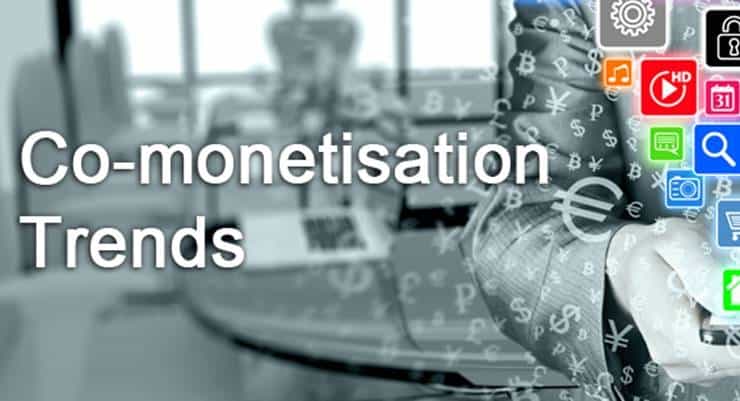By the turn of this year it is a common wisdom in telecom industry that telcos need to reinvent themselves to remain relevant in the digital landscape that is taking over all spheres of business and consumer lives. Telcos are increasingly recognizing the need to transform themselves from provider of basic communication services to digital service providers by leveraging their existing assets. Co-monetisation of assets, where telcos collaborate with vertical industries as well as extend their expertise to other industries, is one way of achieving that goal. This is a good time to take a look at the co-monetisation trends that are likely to prevail in the 2016 and beyond as this is going to be the ‘make or break’ year for telecom service providers:
#1: M2M WILL PRESENT THE NEXT FRONTIER OF GROWTH FOR TELCOS
As M2M technology picks up pace in 2016, spurred by the growth in connected devices, sensors, machines and appliances and so forth, it is going to present vast monetization opportunities for telcos. The sheer volume of data generated by M2M has the potential to create insights that can benefit both enterprises and consumers. As telcos realize the need to transform from mere voice and data services to digital enablers and further to value creators in the connected world, they will take more strident steps this year towards building business models based on data insights and providing end-to-end solution. In early initiatives towards M2M monetisation, telcos will be seen exploring business models around industrial and health monitoring data as well as risk assessment for insurance companies. They will also be seen capitalizing on their infrastructure assets, consumer insights, marketing reach, and proofs of packaging and marketing of M2M use cases for consumers to improve their lives.
Abhay Doshi,
Senior Vice President of Product and Marketing,
Flytxt

#2: TELCOS WILL DITCH ‘DOING-IT-ALONE’ AND EMBRACE THE ACQUISITION OR PARTNERSHIP PATH TO BOLSTER THEIR DIGITAL TRANSFORMATION
2016 Trends and Outlook Polls
One of the key hurdles that remain for telcos in monetizing their assets externally is converting assets into business value. Telcos have the infrastructure in place, wealth of consumer data and marketing reach, but they face challenges in exploiting these assets due to the lack of sufficient expertise beyond their own domain. In 2016, telcos will be increasingly looking outside to find solutions to these challenges. They are likely to partner or acquire specialized analytics firms, marketplaces and product/services companies that offer innovative business models for data monetization. The partnerships and acquisitions will accelerate the telcos’ digital transformation initiatives and give them the much needed agility in adapting to new industry and business models.
#3: TELCO PARTICIPATION IN IDENTITY VERIFICATION AND CREDIT SCORING WILL DRIVE NEXT LEVEL OF DIGITAL ENGAGEMENT
Customer centricity continues to dominate the strategic goals for enterprises in the year 2016. Providing a seamless and personalized experience across channels, locations and off-site interactions will lead the customer-facing mobile enterprises to seek ways to link the online-offline persona of customers. Telcos, with their vast network and large customer bases, will prove be a key partner in enabling these enterprises in tracking and relating the online identity with the offline persona for consistent customer experience anywhere, anytime. Another area where telcos will be seen expanding their collaboration with other industries and OTT players is the analysis of customer data to provide anonymized scoring for credit worthiness, loyalty, and purchasing power of individuals. To provide an example, in developing countries where mobile penetration is much higher than the reach of banks, telcos will enable banks and financial institutions to assess the credit worthiness of borrowers in micro-financing and related schemes.
#4: LOCATION INSIGHTS WILL TRANSFORM THE WAY BUSINESS PLANNING IS DONE
Location based services will prove to be a major area of growth for telcos in 2016. One of the key advantages for telcos in providing mobility insights on population is the fact that it offers enormous scale and does not require an explicit action from its users like downloading an app or reporting location on social media. In addition, the data is real-time and can be shared in an anonymized and secure manner. Telcos will be seen offering enabling services to a variety of businesses, like those seeking to understand the demographic profile or visitors' profile of a certain location for planning new outlets or retail stores; brands looking to attract nearby customers; sports and entertainment outfits trying to understand which localities their fans flow-in from in order to achieve better targeting and so on. With Government bodies slowly recognizing the need for incorporating innovative methods in their developmental efforts, they too will explore the possibility of using telcos’ location data for town and traffic planning.
#5: TELCOS WILL EMERGE AS THE MOST EVOLVED DMP
As mobile penetration exceed half of the world's population and the world sees rapid adoption of smartphones accelerated by the availability of cheaper handsets, mobile phones will start to function as a chief conduit for everything digital. This will get added boost with the expansion of 4G services and increasing M2M connections in 2016. This will generate unprecedented amount of data and make telcos a storehouse of insights on upcoming consumer trends and preferences. Telcos will capitalize on the development for improving personalization and relevance to their customers. Further, these insights will help telcos to forge innovative partnerships with all industries wanting to improve their consumers’ digital experience and build new digital products. This will lead to telcos evolving as the ultimate Data Management Platform.
#6: TELCOS WILL FINALLY CEMENT THEIR ROLE AS MOBILE AD MEDIA OWNER AND PROVIDER OF AD SOLUTIONS
As the need for marketers to gain better conversions on promotions and higher returns on ad spend become more critical, brands will increasingly focus on mobile advertising. Consumers are spending more of their time on mobile, consuming all kinds of media. Mobile advertising saw a steady growth in 2015 and is soon expected to outpace other digital ad formats in many markets. The range of touch points available with telcos is unmatched in the industry. Telcos who have put in place the right technology and partnerships will offer advertisers a very attractive medium for reaching consumers in the right context and at scale. As a result, they will see more and more brands turning to them for targeted advertising solutions in the coming years.
#7: TELCO INSIGHTS WILL LEAD TO MARKET RESEARCH 2.0
Market research has so far mostly depended on sample consumer surveys and statistics available from point of sale data. Market researchers are constantly seeking ever more authentic ways to identify trends and validate their findings, based on which they make future industry predictions. With the fast-evolving digital age, the consumer data that telcos collect will be a dependable source of insights on consumer usage behaviour with respect to various brands. In 2016, telcos and market research firms can be expected to come together to break into this untapped opportunity and create more accurate predictions and estimations on industry trends. The telcos capability to crunch big data and derive industry specific demographic, psychographic and location insights will add another dimension of accuracy to the insights.
While the future is full of promising new opportunities, three key factors will determine their success going forward. The first is how they manage the concerns around data privacy and security. Telcos that manage to implement the right technologies and institute proper data anonymization techniques will succeed in leveraging their data and lead the co-monetisation initiatives in the future.
Second, the agility with which telcos derive market-centric consumer insights and turn them into business opportunity will determine which of them will get a head start in their co-monetization journey. This will require building capabilities in big data technology, acquiring domain specific decision sciences competences and developing data sciences expertise.
Finally, one of the key determinants of success will hinge upon the business model telcos adopt for the new product and services that result from their co-monetization efforts.
Telcos that manage to acquire and/or collaborate with the right partner – those having significant experience in enabling a variety of co-monetisation use cases – will be able to successfully scale and sustain their co-monetisation efforts in 2016 and beyond.
About The Author:
Abhay Doshi is responsible for product strategy, management and marketing at Flytxt. Prior to joining Flytxt, Abhay oversaw product management and marketing of 3G and 4G products at Huawei Technologies, based in Shenzhen, China. In his previous role, he was involved in the planning and engineering of networks and services for Reliance Communications, in India, and in product and services consulting at WANA, in Morocco. Abhay holds an MS in Computer Engineering from Florida International University.



















